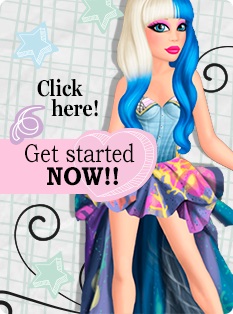A summary and key points can be found at the bottom of the text.
What is the history of the International Day of Persons with Disabilities?
The International Day of Persons with Disabilities is observed on December 3rd each year by the United Nations General Assembly. The day was first observed in 1992 with the goal of promoting the rights and well-being of people with disabilities and increasing awareness of the challenges they face.
Each year, the United Nations chooses a theme for the day that focuses on a specific aspect of disability rights and inclusion. The theme for 2023 is “United in action to rescue and achieve the Sustainable Development Goals for, with and by persons with disabilities.”
What is the meaning of persons with disabilities?
A person with a disability is someone who has a physical, mental, intellectual, or sensory impairment that hinders their full and equal participation in various areas of life and society.
There are various types of disabilities:
• Physical disabilities affect a person’s mobility or physical functioning, such as paralysis, limb differences, and conditions affecting muscle control.
• Sensory disabilities affect one or more of the five senses, such as visual or hearing impairments and tactile sensitivities.
• Intellectual disabilities affect a person’s intellectual functioning and adaptive behaviors. People with intellectual disabilities may have limitations in areas such as learning, problem-solving, and social skills.
• Developmental disabilities affect physical, cognitive, and social development. Examples can include autism, cerebral palsy (CP), and attention deficit hyperactivity disorder (ADHD).
• Emotional or behavioral disabilities involve challenges in managing emotions or behaviors. Conditions like bipolar disorder, types of anxiety disorder, and obsessive-compulsive disorder (OCD) may sometimes fall under this category.
• Psychosocial disabilities arise from a combination of psychological and social factors. They can include conditions like depression, post-traumatic stress disorder (PTSD), or other mental health disorders that impact social functioning.
Disabilities can be categorized as visible or invisible/hidden. Visible disabilities are those that are immediately apparent, such as wheelchair users or those with missing limbs. Invisible disabilities are those that are not immediately apparent, such as chronic pain, mental health conditions, or learning disabilities.
Why is raising awareness about disability inclusion important?
1. Promotes inclusion: Raises awareness to ensure that everyone feels a part of society.
2. Reduces stigma: Less negative perceptions and clears up misunderstandings surrounding disabilities.
3. Advocates for rights: Supports the rights of individuals with disabilities through awareness campaigns and initiatives.
4. Encourages accessibility: Promotes the availability of facilities and services that are easily accessible to everyone, including those with disabilities.
5. Educates the public: Provides information to the public about the various challenges and needs faced by individuals with disabilities.
6. Empowers advocacy: Enables individuals with disabilities to speak up for themselves and assert their needs and rights.
7. Fosters empathy: Creates understanding and compassion, encouraging kind and considerate interactions with individuals who have disabilities.
8. Drives policy changes: Raises awareness to influence and implement policies that address issues related to disabilities.
9. Support caregivers: Offers assistance and resources for those caring for individuals with disabilities, including families and friends.
10. Builds a diverse workforce: Highlights the value of diversity and inclusion, fostering workplaces that welcome individuals with disabilities.
Hidden Disabilities Sunflower
The Sunflower Lanyard or Badge, featuring a yellow sunflower on a green background, is worn by individuals with hidden disabilities. They represent about 80% of disabilities, and the sunflower signals that the wearer may need extra time, patience, understanding, or support. This discreet symbol fosters awareness, encouraging a more considerate and inclusive approach in public spaces. If you see someone wearing a sunflower lanyard or badge, it’s an invitation to be considerate, understanding, and supportive while respecting their privacy and individual needs.
On gSm, the sunflower lanyard can be found in the shop under the accessories category, along with different types of hearing aids and a walking stick, made by our talented Junior Designers.

We have also delved into our archives and discovered this beautiful dress named “Deaf dress”. It was specially designed for one of our Inclusivity Group members, Lunxa, for her deaf competition on the Danish server on goSupermodel 1.0.
The color turquoise blue symbolizes the deaf community and sign language.
The goCode will expire tomorrow, December 4th, at 23:00.
Besides the Deaf dress, we would also like to link two deaf magazines made by Lunxa and her sister Woaje. They have worked on two magazines focused on the deaf community and culture to spark curiosity and share knowledge.
You can find the magazines here and here. The price is 15 gM per magazine.
How can I help?
1. Educate yourself: Learn about different disabilities to better understand the challenges individuals may face.
2. Be inclusive: Foster environments that embrace diversity and provide equal opportunities for everyone.
3. Offer support: Be mindful of the needs of individuals with disabilities and offer assistance when appropriate.
4. Spread awareness: Share information to challenge stereotypes and promote a more inclusive society.
Together, we can create a world that recognizes the abilities of all individuals and celebrates the unique strengths they bring.
In summary:
• Today, December 3rd, is the International Day of Persons with Disabilities.
• It aims to promote the rights and well-being of people with disabilities.
• There are different types of disabilities (physical, sensory, intellectual, developmental, emotional/behavioral, and psychosocial).
• Disabilities can be visible or invisible/hidden.
• Sunflowers represent hidden disabilities and signal a need for extra time, patience, understanding, or support.
• To help, you can educate yourself on different disabilities and spread awareness to challenge stereotypes.
Do you have something on your heart? Do you have a story you want to share with us? Do you have suggestions for what our JD's can design for the Inclusivity Shop?
Click here to join the chat with the Inclusivity Group.
With love,
The Inclusivity Group.
